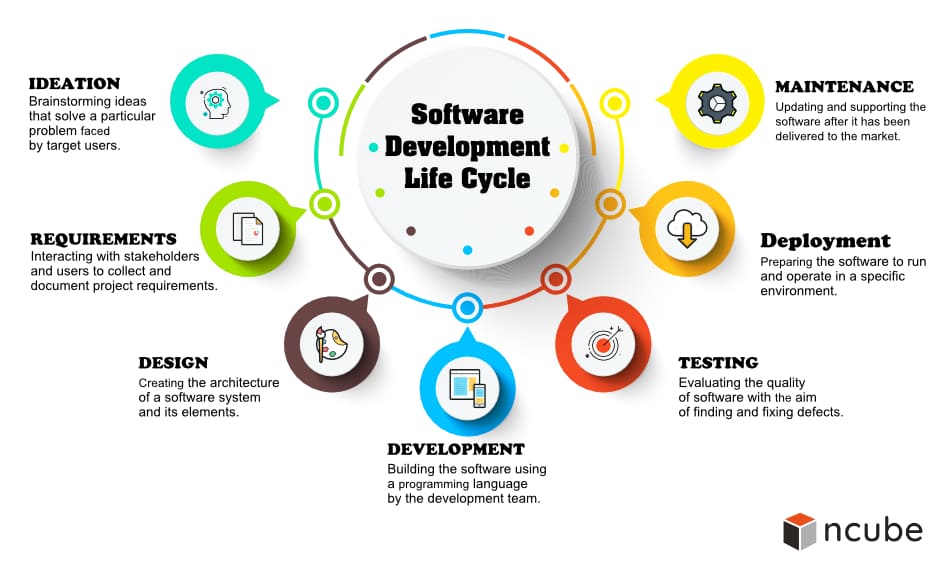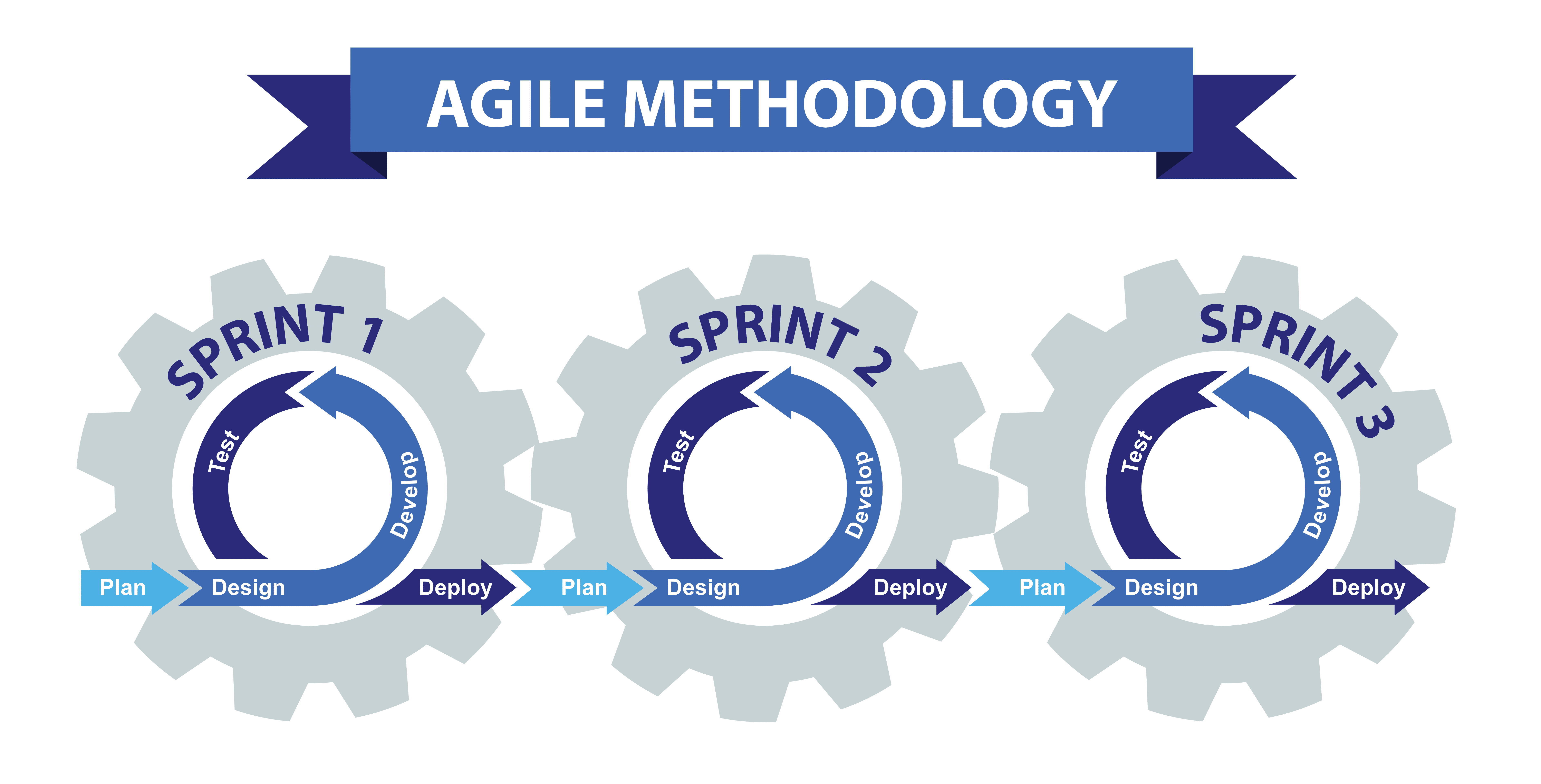
Software Development Life Cycle: A Guide to Phases and Models

Complex things make our lives easier. Take self-driving cars, smart homes, or augmented reality capabilities built into eyewear, for example. All of those things are powered by complex software working behind the scenes.
However, no matter how complex the software is, it needs to be flexible, easy to maintain, and enhance. How do software developers achieve that? The answer lies in thorough planning each step of the software development life cycle.
Outlining the software development process is a great kick-off point in software product development. In this article, we discuss the notion of software development life cycle, its phases, and common methodologies used in it.
Software Development Life Cycle: Definition
Software development life cycle (SDLC) is a series of steps that a team of software developers must follow to develop and maintain software.
A software development life cycle begins with a decision to build software and ends after removing that software from exploitation. The software development process includes 5 key phases. Each of them contains several steps. Essentially, SDLC is a roadmap for software product development.
Why is SDLC important? From deadline breaches to rushed decisions and futile attempts to bring the project under control, poorly planned software projects tend to go out of hand. In contrast, having an outlined software development life cycle in place, businesses can have the bliss of a predictable software product development. For software developers, it means understanding what they do now and what comes next. Here are some key benefits of SDLC:
- It provides visibility for the parties engaged in software development;
- It allows business owners to retain control over the project;
- It ensures predictable deliveries throughout an entire software development process;
- It minimizes risk, for example, going over budget or deadline;
- It ensures that the software development process continues until all expectations are met.
Thus, all projects should have an outlined software development life cycle because it’s the only way to ensure the resulting software will meet the demands of both business owners and end-users.
Software development life cycle: Phases

Phase 1. Requirement collection
Goal: to gather and document business requirements
This step includes collection of requirements for software product development from stakeholders, industry experts, and even potential customers. After that, the project owners outline the project scope, defining a budget, resources, deadlines, and potential risks and quality assurance requirements.
All requirements are encapsulated in a formal document, Software Requirement Specification. Project managers, business analysts, and software developers will refer to this document frequently.
Phase 2. Design
Goal: to translate software development requirements into design
This stage of the software development life cycle involves designing the entire system and its elements, including high-level design and low-level design. High-level design (HLD) is defined as the system’s architectural design, whereas low-level design (LLD) is the design of its components. Thus, LLD is a detailed description of all components, configurations, and processes of IT infrastructure.
There is no clear set of rules to structuring the System Design Document, as it’s tailored to each project individually, but it usually includes the following:
HLD:
- System elements and how they interact with each other. For more convenience, the information is presented in the form of cases (as in “by performing step A, you get the result B”);
- Implementation. This section includes a table containing concise information about the main stages of software product development;
- In addition, HLD should contain information about resources, technologies, and information on possible risks (and how to prevent them) as well as ways to recover the system in case of failure.
LLD:
- Layout and connection of equipment;
- Software module installation schemes;
- Specifications of the operating modes of the system’s components.
Phase 3. Software development
Goal: To build the actual software
Software development is the most time-consuming phase of software development life cycle, but it’s more predictable than the Design phase. Using the design document, software developers write code for the components. The tasks are divided between the team members according to their area of specialization. Front-end software developers are responsible for creating an interface and its communication with the server. Database administrators add necessary data to the database. Software developers use coding guidelines and various tools to write and implement code. The result of this phase is a working software product and a Source Code Document.
Phase 4. Testing
Goal: To ensure the software meets requirements
After a development team completes programming software, it’s time for the Quality Assurance (QA) team to step in. The QA team tests the software to measure its quality. During this phase, the software undergoes different kinds of tests:
- Functional testing: Ensuring that software is in line with the requirements described in the Software Requirement Specification;
- Performance testing aimed to determine how the software works under a workload (its speed, responsiveness, and stability);
- Unit testing: Testing each component individually. If any of those has a flaw, software developers responsible for it have to go back and fix it.
- Security testing: As the name suggests, this type of testing aims to verify the system’s security;
- Usability testing: This type of test involves testing user-facing components to determine if the software is intuitive, easy to use, and understandable for users.
Software developers fix any bugs that come up at this stage, and then the QA team tests the software or its component again. Quality assurance is an ongoing process that continues until the software is entirely free of bugs and meets the requirements.
Phase 5. Deployment
Goal: To deliver completed software to users
The tested version of the software is shipped to the market for beta testing. The support team collects feedback from the first users, and if any bugs come up during this stage, software developers fix them. After that, a new, improved version is rolled out. The deployment stage also includes further software maintenance and its constant strengthening.
Software development life cycle may also entail ideation (or initial planning), preceding requirements collection, and maintenance as the final stage.
READ ALSO: Most Popular Web Frameworks in 2019
Software development process: Models
Software development life cycle models allow you to effectively plan and follow a software development process step-by-step, making it as predictable as possible. Each model comes with its own approach to the software development process. No matter which model you choose, the phases of SDLC will remain the same. Below, we take a look at the two most common methodologies.

Software development life cycle: Agile model
With the Agile approach, software developers can quickly adapt to the market situation, as this model allows them to make changes to the product at any stage of the software development process. This approach perfectly suits projects with varying requirements.
What does Agile software development life cycle look like? This method lets you build products using short cycles (“sprints”), where each sprint ends with a working product with a limited number of features. Each sprint includes design, development, testing, and deployment.
The benefit of this approach is that product owners can see the results of each short cycle, provide their feedback, and make corrections if needed. At the beginning of the next cycle, software developers revise the previous version of the product and present it for the next round of feedback. As such, the Agile software development life cycle is known as a continuous process.
Key characteristics of Agile:
- Limited deliverables, adding new features on the go;
- Testing is performed throughout the entire software development;
- Ongoing communication between customers, software developers, project, resulting in improved versions after each sprint;
- Quality Assurance is the key process.
Keep reading Web Development Tools Trends and Resources.
Software development life cycle: Waterfall
As two utterly different approaches to software development, Agile and Waterfall are suitable for different kinds of projects. The Waterfall model is a good solution for projects with stable and defined requirements, whereas Agile is best suited for projects with varying requirements.
Waterfall promotes a rigid approach to software development as compared to Agile’s flexible approach. This model doesn’t suggest implementing any changes within the software development process. Software developers can only proceed to the next phase after the previous one is finalized. Thus, there will be only one software version, whereas in Agile, each sprint results in a working software version.
Build your own virtual team in Ukraine
Key characteristics of the Waterfall model include:
- A rigid sequence of development steps;
- Transition to the next development phase is possible only after the previous phase is completed;
- Fixed budget;
- Customers are not involved in the software development process;
- Changes can only be implemented after the development process is finalized.
Software development is a huge undertaking and requires thorough planning, regardless of the model. Software development should begin with requirements gathering and undergo architecture design, development, testing, and deployment. After that, the SDLC continues with post-launch maintenance, including software updates and support. Waterfall and Agile are the two most common methods applied in software development, although many companies incline towards Agile nowadays, given the ever-evolving needs of the market.
Recommended articles



